During any great gold rush, tales of fantastic finds abound -- some are real and some are not. In the mother lode country of California in the fall of 1850, there were a lot of fantastic finds but probably the wildest tale of that time was the story of a lake surrounded with gold nuggets – the “Gold Lake”. A prospector named Tom Stoddart, supposedly discovered a lake paved round with gold nuggets in the high Sierra country between the Sierra Valley and Downieville. These lake gravels were supposed to yield an ounce to the pan full. He and his partner were lost at the time and the partner died in the struggle to get back to civilization. His story spread like wild fire. It was late in the year when he first straggled into town, and so the whole winter folks throughout the area waited and prepared to begin a spring time search for this great new discovery. When the winter snows melted, hundreds of prospectors took off in the hunt. No lake of gold was ever found, but many important new discoveries were made by the prospectors who set out into the high Sierra backcountry searching for that fabled gold lake. In that fateful spring of 1851, a few prospectors found some gold in a small stream that is now known as Jamison Creek. The placers were not especially rich, but still they paid wages and the prospectors kept looking for better deposits. They decided to send a few members of their party up a steep hillside they called Gold Mountain to see if they could get the lay of the land and figure out the best spots for gold deposits.
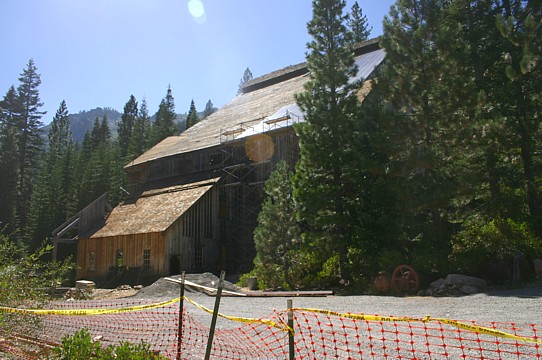
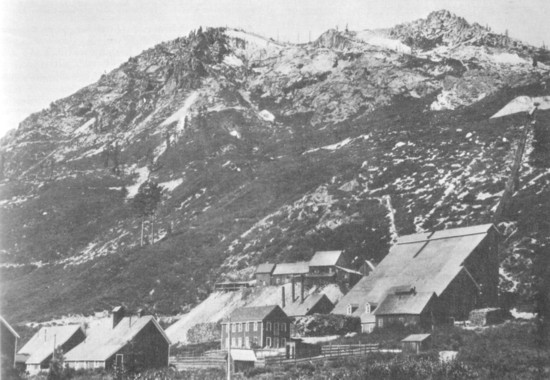
Between 1851 and 1865, the local mines yielded nearly $2 million in gold. During this time, the Eureka mine paid its shareholders over $250,000 in dividends. Although a rich new chimney of ore was discovered in 1868, by 1871, the rich ores had begun to become scarce, and the mines were not paying as well as they once did.
The Sierra Buttes Mining Company was an English Corporation that had been very successful mining hard rock ores nearby in Sierra City. They had the men with experience who knew underground mining and they had the capital to make the investments necessary for profitable large scale operations. They had been so successful at Sierra City that they had begun to search the region for new projects which would be profitable to them. The gold mines of Eureka Mountain presented an interesting potential and the two mines were not far apart. There was considerable low-grade ore at Eureka Mountain which they felt they could mine profitably. Those low-grade ores still remained within the mines because the early miners could not work them profitably. The ore was well identified as it was surrounded by the adits and winzes of the earlier workings, so the English company knew well just what they were getting into. The steep slopes of Eureka Mountain allowed the ores to be dropped down through the mine by gravity and water power was used to run the stamps inexpensively. The English company sent experts to go through the Eureka Mountain mines and evaluate them. The experts gave glowing reports of the potential offered by these mines. The English made a careful effort to acquire all the different mining properties in the area so that they could all be worked together as one operation instead of competing smaller ones.
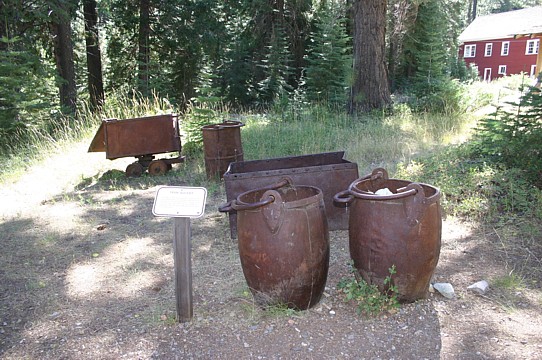
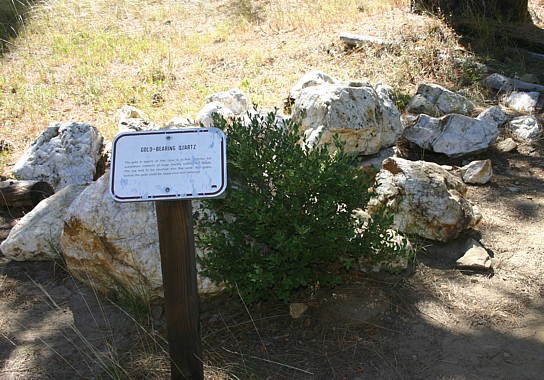
By 1872, they had acquired all the properties and had begun to make some changes one of which was the construction of a 40 stamp mill. The combined properties were named the Plumas Eureka mine. The lower haulage tunnel was also enlarged. By April of 1873, the new mill was receiving ore. The British established their own company town and the normal rowdiness and drunken carousing typical of a mining town was simply not permitted. Families with children were encouraged and the town flourished. Not to be left out, the local miners also established a competing town with more saloons and without restrictions nearby. In time, a new mine manager was brought in to improve operations. William Johns the manager of the Sierra Buttes mine took over the operations of the Plumas Eureka as well. Improvements in profitability were noted shortly thereafter. By 1875, a semiannual dividend of two shillings was established for the British shareholders of the Plumas Eureka mine. This was equivalent to about a dollar a share. In 1877, that dividend was increased to three shillings or about $1.50 per year. Mr. Johns was well respected by both the locals and the British mine owners, so much so that the residents along Jamison Creek named their town site Johnsville in his honor. The ores in those days averaged about $12 per ton and a good profit was made in treating them in spite of the fact that the mill tailings still contained about two dollars per ton in gold. A number of small operations were set up by independent operators to treat the tailings in arrastras. Each of the small operators paid a share to the Plumas Eureka mine for permission to retreat the tailings. In those days, treatment by cyanide had not yet been invented as a practical method for treating old ores. The mine remained very profitable throughout the late 70s and early 80s. Gold bullion was produced in large and reliable quantities with millions of dollars being harvested from the veins of Eureka Mountain. Over the years, the Plumas Eureka mine actually turned out to be more profitable than the Sierra Buttes mine which the English company had originally started out with.
However by 1884, the ores being mined had dropped in value to less than six dollars per ton. Mining and milling cost about four dollars a ton, leaving only a small profit margin. The dividends had to be reduced, which was not popular among the English shareholders. Great care needed to be taken so that the mine would remain profitable. Under Mr. Johns supervision, some additional rich or was found in 1888 the ore mined yielded $7.50 per ton which was an improvement over the head grades of the previous few years. The lowermost tunnels have been extended under the mine over 6000 feet giving 1500 feet of backs above the tunnel level to the surface of the mountain. Within a couple of years, to head grades again decreased in the dividends paid to shareholders had to be reduced to very small amounts and often these were paid out of the mine’s reserve funds. In spite of the fact that the ore was low-grade, the mine remained open and productive until 1897. Between 1897 and 1901, the mine was operated by lessors. These new operators did not do any additional exploration in the mine, but concentrated their work in and around existing stopes, taking out old pillars and sweepings left behind by the British company. A percentage of the profits were paid to the British company. In 1904, the mine was sold and there was word that the new owners would invest great sums of money to work the ores that existed below the lowest tunnel level. A deep shaft or great long tunnel would be required to work deeper ores and it would have to be done at a higher cost. Unfortunately, the funding for such a project never materialized.

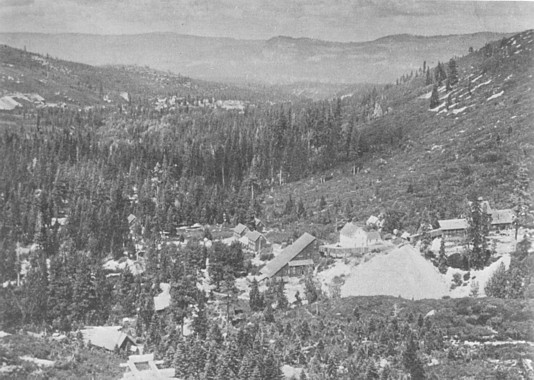
In the 1890s, a new mine was opened in the area, and although the Jamison mine was much smaller than the Plumas Eureka, it was productive and profitable for number of years. In 1896, the Jamison company opened a new 10 stamp quartz mill. 10 more stamps were added in 1897. After the Plumas Eureka mine was shut down, the Jamison became the chief producer in the district. Some dividends were paid to the stockholders. Although the mill was damaged by fire in May of 1899, it was soon reconstructed and back in operation. The mine continued in active operation at least part of each year through 1919. Total production from 1896 to 1919 was somewhat over $2 million in gold.
The Johnsville District lies at the north western and of a gold bearing mineralized zone that extends from Sierra City to Johnsville. Much of the area is covered by glacial debris so the exact geology is not perfectly understood. The oldest rock exposed in the area is the Sierra Buttes formation, the remnants of an ancient island arc system. Gabbro, Pyroxenite, Granite and lakebed sediments are also exposed in the area. Metamorphic rocks are exposed nearby. The Eureka vein lies mostly in the Gabbro and Pyroxenite.
After the mine closures, some very small scale operations continued at both mines and small productions were made but nothing like the days of active operations. The company town of Johnsville suffered, businesses closed and a number of the residents moved away. The harsh winters in this area made it a less attractive spot for residents who did not have a job or another compelling reason to stay in the area. Johnsville had suffered serious fire damage in 1884, 1892, 1902, and 1906. Because of a lack of business, the area was very slow to rebuild after the 1906 fire. In 1943, small amounts of dumps and other waste products were shipped from the Plumas Eureka to the smelter -- this was the last significant production of gold made from the area. After World War II the region and all its mines were acquired by the state of California who made them into a state park.
The Plumas Eureka State Park is one of the hidden gems of the California state park system. Few people seem to know about it but it has much to offer. The California Parks Department has rebuilt many of the old buildings at the Eureka mine. The old miner’s boarding house has been converted into a museum and park offices. Both the natural history of the area as well as the past mining operations are displayed. The blacksmith and old assay office have also been restored. The old Eureka mill is in the process of being restored and put back in the condition it was when the mine shut down. It is a very educational place to visit. The park allows panning in Jamison Creek, although more significant operations like dredging, sluicing or high banking are not permitted. I have panned there myself and found some colors in the gravels of Jamison Creek, but nothing of any great size or richness. About a mile above the Eureka mine the park system has created a beautiful campground called upper Jamison Creek. It has 67 camp spots available most of which are both shady and beautiful. It is a fantastic place to experience the history of the California gold rush and a great base camp for exploring the Plumas County area in general. The entire Plumas Eureka / Graeagle / Johnstown area is a spectacular vacation spot, offering fishing, a number of golf courses several campgrounds. There are also several nice hotels and fancy restaurants to meet the needs of the discriminating vacationer.
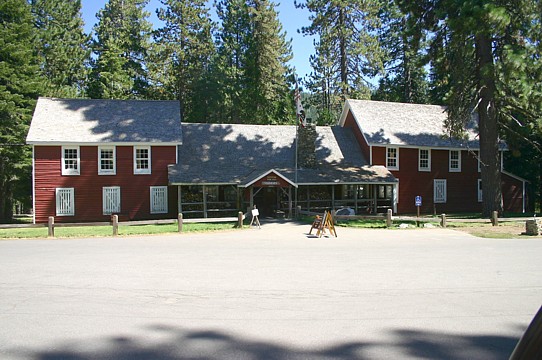
All Copyrights retained by Chris Ralph, do not copy or reprint without permission
